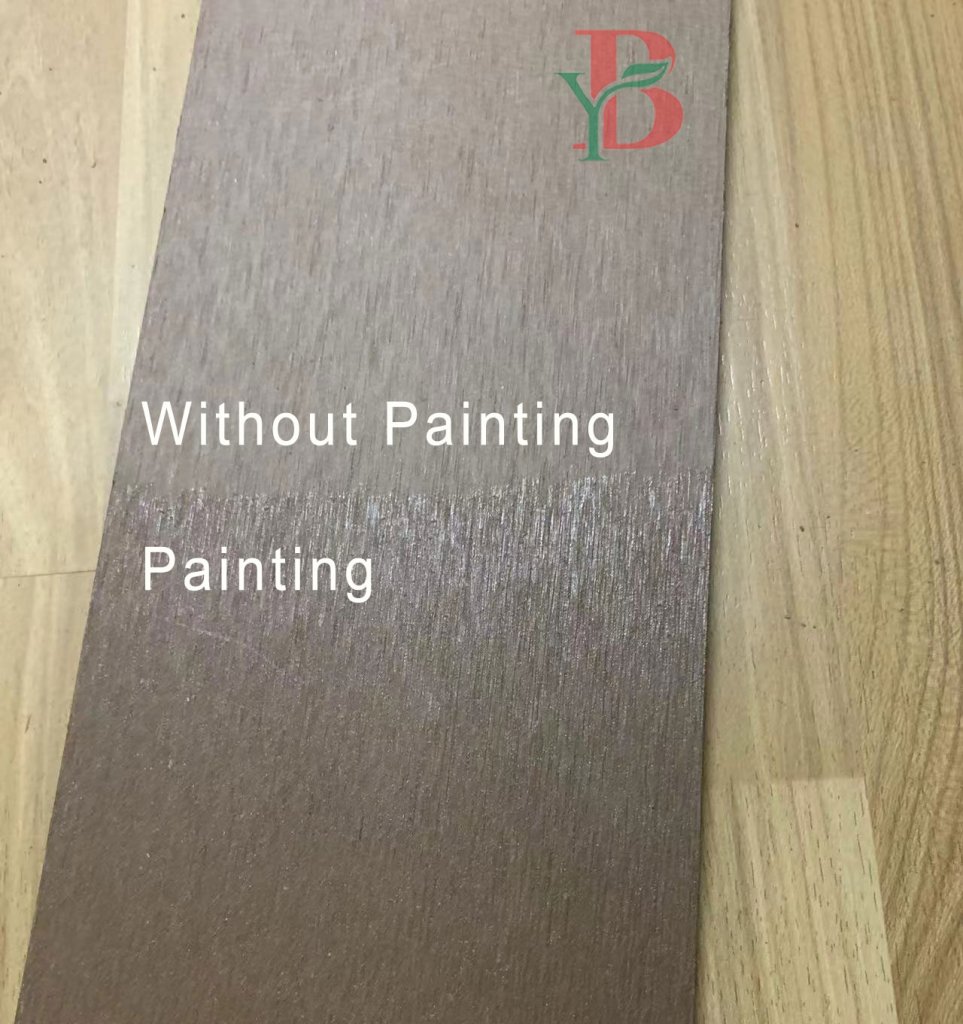Wondering if you can paint composite decking? While composite decking is designed for low maintenance without regular painting or staining, many homeowners ask about painting their composite decks after years of fading or color change. This comprehensive guide answers whether you can paint composite decking and provides step-by-step instructions for those who choose to do so.
Can You Paint Composite Decking?
Although there is no need to paint or stain composite decking due to its design as a low maintenance product. In fact, lots of the older composite decks we see have been painted. So, can you paint composite decking? The answer depends on your deck types:
- Uncapped Composite Decking: Yes, you can paint or stain traditional uncapped composite material.
- Capped Composite Decking: No, you can’t paint on the surface of capped composite decking. Otherwise, the paint won’t adhere to the protective shell.
Once you start painting deck boards, you are caught in a cycle of having to repaint them often because the paint wears out. So, if you are willing to keep up on the maintenance requirements after painting, you can paint your traditional uncapped composite deck. It’s also important to note that painting decks can sometimes void the warranty depending on the manufacturer.

Types of Composite Decking?
Composite decking is a mix of wood fibers and plastics. There are two main types of composite decking:
Traditional Uncapped Composite Decking
- Core Material: Exposed composite blend
- Surface Type: Natural composite texture
- Durability: Standard weather resistance
- Paint Options: Accepts paint and stain
- Properties: Behaves similar to wood
Capped Composite Decking
- Core Material: Protected composite blend
- Surface Type: Protective plastic shell
- Durability: Enhanced weather resistance
- Paint Options: Non-paintable surface
- Properties: Advanced fade and stain resistance
The main difference is that capped composite decking has a plastic cap or protective shell that encases the composite core. While the cap provides added protection against the elements and everyday living, so capped composite decking claims to more durable and has better fade resistance than uncapped composite decking.
The traditional uncapped composite decking is uncapped, which doesn’t have a plastic cap or shell, allowing the wood fiber mix to be exposed. Some people prefer non-capped traditional composite decking because they behave like traditional lumber and will weather similarly to real wood. The traditional uncapped composite will accept paint or stain, but the capped composite won’t.

Materials Needed for Painting Composite Decking
- Soft bristle brush (cleaning)
- Deck cleaner
- Paint brush/roller
- Sandpaper
- Primer, if required
- Deck stain or exterior paint suitable for decks
How to Paint Composite Decking
When painting a composite deck, you’ll follow the same steps you would use when painting a traditional wood deck.
Step 1: Clean your composite deck
Remove debris and dirt using soapy water and a plastic-bristle brush. To remove stubborn stains, such as mildew and mold, commercially available deck cleaners or detergents for wood decks can be used, make sure that you follow the manufacturer’s recommendations for use, do not use bleach or other harsh chemicals, including cleaners intended for capped composite decking.
Allow decking to dry. This might take a few days, depending on conditions. Test for dryness before applying paint or stain.
Step 2: Sand with high grit sandpaper
Many composites will need to be sanded the surface to accept paint or stain. Otherwise, the surface is too smooth and you will have a failed painting or staining on your composite deck. Gently roughing the surface will help stains penetrate better and will help paint adhere more easily.
Step 3: Prime your deck
You can use any type of exterior wood deck paint for non-capped composite surfaces. This type of decking behaves similarly to traditional wood, accepting the same types of paint.
Painting your composite decking may require a primer, but many paints brand are “self-priming” which don’t require any type of primer. While they require cleaning products, they don’t need a primer as oil-based stains rely on penetration, which primers would block.
Some water-based solid color stains may require a primer, but if that is the case, any type of wood grain – even if it is fake – will be covered. So when you called for or for better hiding power, you may use an acrylic latex exterior primer intended for decks. Appy it with a brush or roller, working along the length of the planks. The more expensive it is, the more acrylic it will contain. The acrylics – or acrylic resins – make the paint heavier and more durable. Cheaper acrylic paints have vinyl mixed with acrylic. Vinyl is not as durable, is lighter, and will result in a lower quality surface for your composites. It will likely peel and chip much sooner than a higher quality acrylic.
Step 4: Paint your deck
Once the primer dries, apply the paint as you did the primer. If necessary, apply two coats, but make sure the first application is fully dry before adding a possible second coat. Dry times will vary, so be sure to consult the product label for recommended drying time. Avoid painting in direct sunlight, which can play havoc with wet paints, especially on a really hot day. Wait until morning or evening, or during a shady part of the day to apply.
Step 5: Keep the deck clean
To keep your composite deck looking good, wash it at least twice a year and apply a maintenance coat of paint when necessary.
How Long Will Composite Deck Paint Last?
Once you paint your decking, you will need regular maintenance. If you keep it clean, minimize foot traffic, and lack extreme weather, considering everything is in ideal condition, then expect a life of 2 to 5 years.
However, when you add in weather, UV light, and foot traffic, the durability of paint can change. If you have extreme weather and temperatures, or have lots of traffic on your composite surface, then expect your surface to have a shorter lifespan and need to recoat fully in less than two years and spot patches before that time.
FAQ Section
Can you paint all types of composite decking?
No, only uncapped composite decking can be painted effectively. Capped composite decking has a protective shell that prevents paint adhesion.
How much does it cost to paint composite decking?
Costs vary but expect $2-4 per square foot for DIY, including materials. Professional painting may cost $4-8 per square foot.
How long will the paint last?
Under ideal conditions, paint can last 2-5 years, but high traffic areas may need recoating sooner.
Conclusion
Overall, it is best to avoid painting composite decking, especially for the capped composite decking. However, if you have older uncapped composite decking and you really want to change the color, you can paint it. Just be sure to follow the instructions carefully to ensure a successful outcome.
Please consult with the manufacturer of your composite decking before painting to ensure that the paint is compatible and will not void the warranty.
For further insights, refer to the following sources:
Bongywood Wood Plastic Composite
Guangdong Bangying New Building Materials Co., Ltd. is a professional manufacturer specializing in the R&D, production, and sales of WPC (Wood Plastic Composite) materials, our products include composite decking, capped composite decking, WPC Wall Panel, WPC Railing & Fencing, WPC Pergola & Gazebo, WPC Chairs & Bench, WPC Flower Planter Pots, etc.
Leave a Reply






